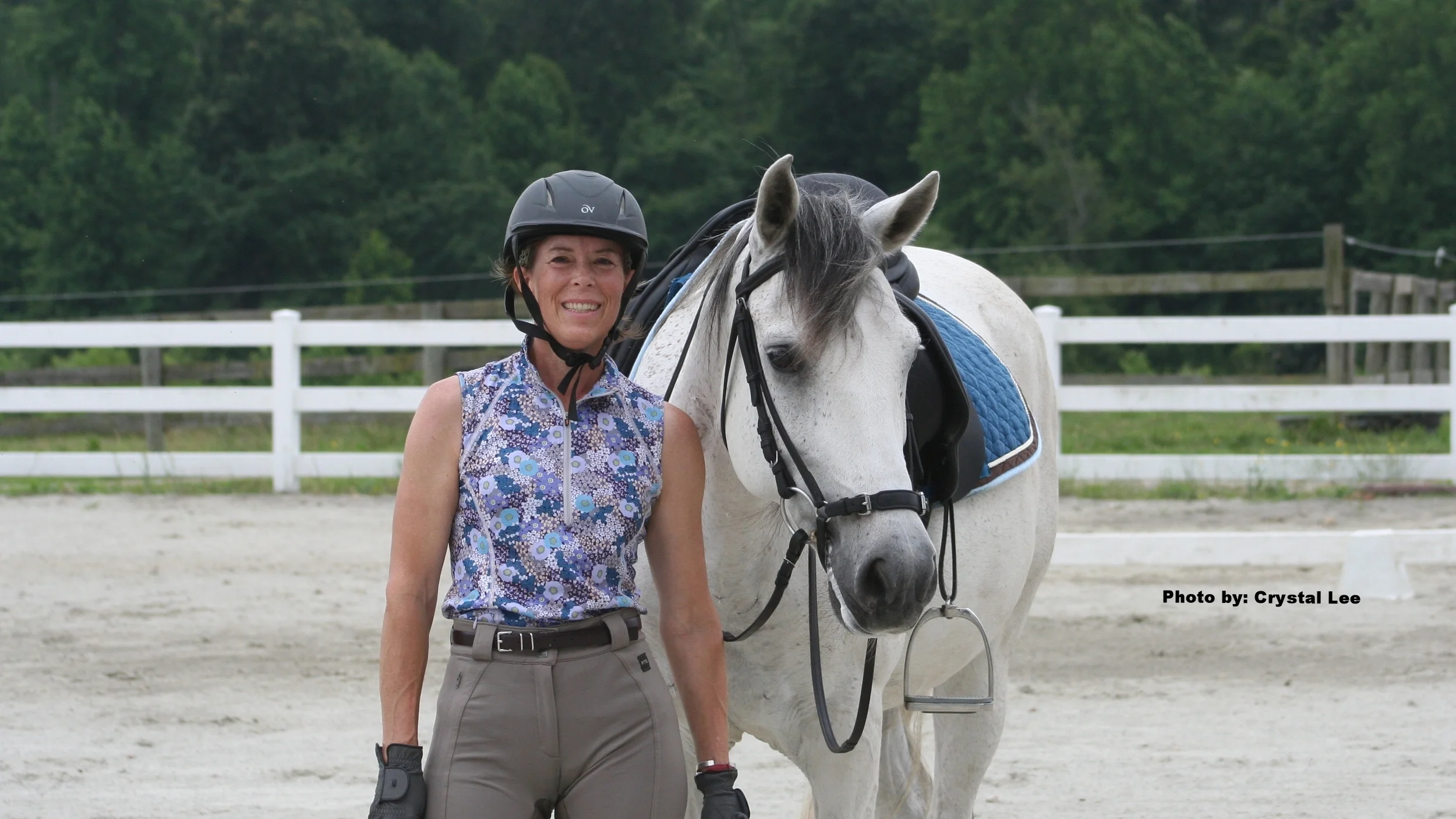The ABC's of Steering
/Sequence of the Aids: A – Seat, B – Leg, and C – Rein
Quick quiz: You put your friend, your husband, your daughter, your niece, anyone on a horse for the first time. What is the first thing you teach them? You give them the reins and say: Kick to start. Pull left to go left and pull right to go right. Pull both to stop. Right? Of course that is what you do, no matter what you know.
I had been steering my horse with reins for years. I could get my horse to go and stop (well, to be absolutely truthful, not always, but that is another blog post!). Of course, like everyone, I encountered times when my horse and I disagreed on direction, particularly when leaving the barn on a trail ride. There were times when I pulled my horse’s head all the way to his middle in an attempt to turn and we still went sideways in the opposite direction. I also executed the spinning maneuver until both my horse and I were so dizzy we finally lurched into my desired direction. Yes, I was fine-tuned in the art of gross-motor steering as a rider. I was never taught that there might be another method in which to communicate with my horse.
Enter the first year student at Meredith Manor. No matter what our background, riding experience, ribbons and trophies won, style of riding, we all start on a level playing field: riding our horses in snaffle bits on a long rein without contact. There is no pulling, yanking, or spinning. Students who are not able to let go are sometimes made to ride with their hands top of their helmets. This was a rude awakening to how dependent we were on our reins and how impercipient we were to our horse’s movement and the use of our weight and leg aids.
Put yourself on your horse as if for the first time and give the reins to a friend to lead you around: start, halt, walk in circles, make unexpected turns. Feel the horse’s movement. Focus on how the horse makes your body move. Close your eyes. Do you fall forward or back? Do you lurch sideways? Try to stay in balance with your horse. Let yourself move with your horse.
Before you can attempt to steer, you need to be able to follow your horse in balance. Once you can do that, you can halt or turn with your body, using your seat and leg aids to change the balance and interrupt the motion. Your horse will stay in balance with you and make a change to follow your motion. Simply put: To walk with your horse, your body has to move in the horse’s walk motion. To halt, your body has to stop moving or following the horse in walk.
Want to turn left? Look where you want to go and let your upper body turn in the new direction. Step into your inside stirrup and burden your left seat bone. Let your inside leg stay at the girth while your outside leg moves back, so that your lower body creates a directional channel for your horse’s body. The fundamentals of steering are to learn how to use your seat and leg aids in order to communicate with your horse. After that, you can have your reins back!
Now imagine a class of 7 students on horseback learning this in the arena at walk, trot, and canter! You’re right – total chaos. In a typical lesson, 3 of us trotted on the wall, our horses fixated on following each other, despite our best efforts to turn; 2 riders trotted in the opposite direction, another rider cantered wildly around the arena, and there was always one rider standing in the middle just trying to stay out of the way. In order to learn how to steer, we had to first learn how to follow our horse’s motion and chosen direction of travel. This means being willing to give up control through the use of your reins; at times, it seems like you surrender to your horse’s whims as you careen around the arena desperately trying to stay in balance and follow.
The day I finally managed to convince my horse, without using my reins, to stop following the horse and rider in front of us, to turn and trot across the arena was a major breakthrough. I felt triumphant that I had managed to convince my horse to stay in balance and follow me using my body influences.
When you give up the concept of rein control, you become more perceptive to your horse’s body language and your own body responses. And you re-define the concept of control. You actually gain more control when you gain the ability to communicate more effectively in a percipient manner.
Now put your friend, your husband, your daughter, your niece, anyone on a horse and teach them the ABC’s of steering: Follow your horse and look where you want to go! Remember – everyone can learn how to use their seat and legs before you hand them the reins!
Sequence of the Aids: A – Seat, B – Leg, and C – rein
